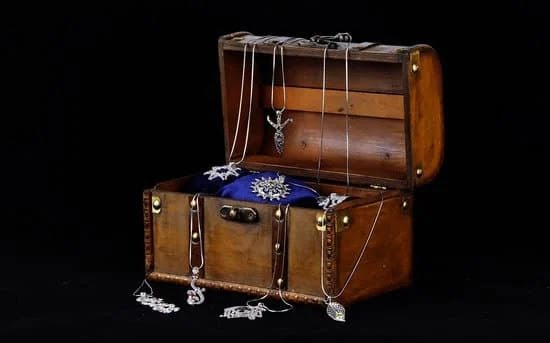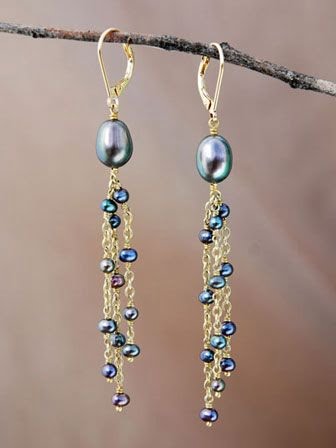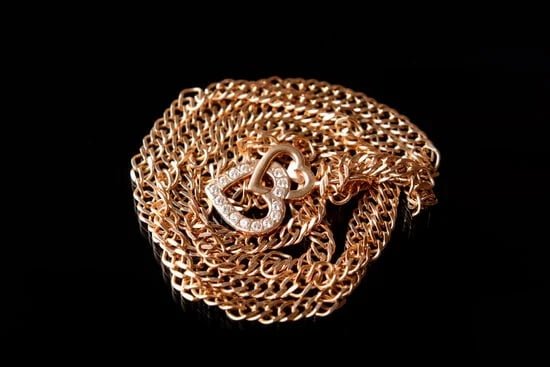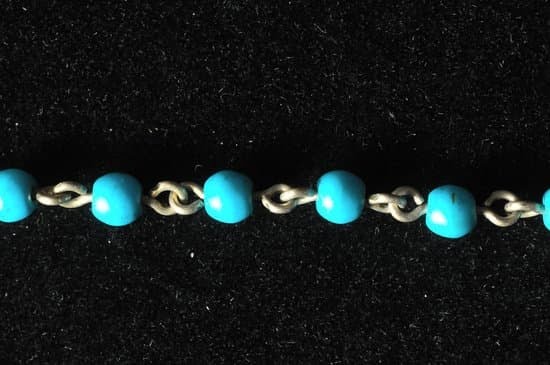Introduction
Painting jewelry can be a fun and creative way to customize plain pieces, add color to sparkly gems, or even turn a vintage piece into something more modern. There are a variety of different approaches you can take when painting jewelry, from using specialized tools and materials to achieving the look of brushed metals or stones. Before you start, it’s important to understand what kind of material your jewelry is made from and the most suitable paints for that surface.
When it comes to supplies needed for painting jewelry, the items required will depend on the technique being used. In some cases, basic artist supplies such as brushes, acrylic paint and sealer are all that is necessary. Other techniques may require the use of metal pigments, patinas and resin or enamel coatings. Be sure to read any product instructions carefully before attempting any painting techniques. Allowing the paint to dry thoroughly between each step is also essential for achieving successful results with your painted jewelry designs!
Types of Jewelry That Can Be Painted
Jewelry that can be painted with specialized paints include plastic, ceramics, metal, stones and wood. Additionally, fabric jewelry (including leather) is also well-suited to painting. If you are planning to paint jewelry made from different materials, it is important to use the appropriate type of paint that adheres best to the material in question. For example, acrylics for metal and other synthetic materials; watercolors for porcelain; oil paints for wood; enamel paints for glass; markers or colored pencils on silk or velvet fabric. Some paints may require an adhesive to adhere properly depending upon the type of surface you’re painting on. Before beginning your project make sure that you have all the necessary supplies so as not to interrupt your workflow while painting. Once you’ve decided on a design, carefully apply each color or layer until you reach the desired effect or look. Lastly, make sure the jewelry dries thoroughly before wearing!
Painting Techniques to Consider
When painting jewelry, there are several different techniques to consider. These include watercolor painting, acrylic painting, oil painting, spray-painting and dry-brushing. Each type of technique results in a different end result, so it’s important to take the time to determine which one would be best for your particular project.
Watercolor is a great choice for painting jewelry because it produces delicate, dreamy results on metal or glass surfaces. It’s easy to work with and create subtle shades that bring out detail and depth. When blending colors watercolors are often preferred because of their ability to mix neatly and easily.
Acrylic paints tend to be thicker than watercolors so they can be applied in heavier layers creating more texture when desired. They are also more waterproof so you may want to use them if your jewelry piece will come in contact with water at all.
Oil paints provide even better coverage than acrylics as they stay wetter longer allowing you to blend colors effectively over time – perfect for intricate details or large areas that require shading. There is a slower drying time for oil paints however making them better suited for paintings rather than live objects such as jewelry pieces that need quick finishing touches.
Spray-painting is great for achieving an even coverage quickly without having to worry about smearing paint or leaving bald spots uncovered. You can also use newspaper or stencils cut out of simple materials like cardstock or cereal boxes in order customize the design further by blocking off certain sections when spraying onto jewelry pieces.
Lastly drybrushing is used mainly for application of highlights and shadows since it doesn’t leave thick layers of pigment behind like other techniques do. A soft brush loaded with paint is gently brushed across the surface causing subtle variations in color while still allowing underlying material (like gold plating) to show through its own luster where needed.
Tips for Choosing the Best Paint for Jewelry
When painting jewelry, you’ll want to choose a paint that is suitable for the material and won’t damage the piece. For metal pieces, it is important to use a paint that resists tarnishing. Acrylic paints are a great option as they offer excellent adhesion, durability and protection against corrosion. Moreover, acrylic paints dry quickly and are easy to clean up with water. Epoxy paints are also an option but their application requires more expertise and experience.
For wooden jewelry, oil-based paints offer good color coverage along with durability. However, you may need to apply several layers of these paints in order to get the desired finish. Water-based paints can be used too but they are not as long lasting as oil-based ones and need regular touchups or refinishing over time.
In addition to choosing the right type of paint for your jewelry, it is also important to make sure that you use the best quality of paint for your surface in order to achieve professional results. If you’re painting ceramic or enameled surfaces, be sure to purchase an ultrafine high coverage spray or brush on lacquer which will help create an even layer of finish and protect your jewelry from scratches or other abrasions. Lastly, buy a sealer specifically made for your chosen material in order to keep your project looking its best throughout its lifetime!
Preparing Jewelry for Painting
Before you begin to paint your jewelry, there are a few things you should do first to make sure the paint sticks and lasts. Firstly, make sure that all jewelry is completely clean by using a polish to get rid of any dirt or oils on the surface which can prevent the paint from adhering. Next, you will want to make sure that all of your jewelry is sanded with very fine grit sandpaper to give the paint something to stick onto. Doing this will also help create an even finish for your jewelry pieces. You may need some primer on certain metals in order for the paint too stick properly, so make sure to check ahead of time if this isnecessary for your materials. Once your metal pieces have been prepped, it’s time to start painting!
Applying the Paint to Jewelry and Finishing Tips
When painting jewelry, you will need to have several supplies ready beforehand. Gather a few small paintbrushes in different styles, a few colors of waterproof acrylic paint in the colors of your choice, and any additional elements you may want to embellish with such as glitter or rhinestones. It’s also important to have a selection of sealers, including both glossy and matte. These sealers are necessary for protecting the paint from being scratched or damaged.
Begin by applying an even coat of paint to the jewelry using the small brushes. If desired, after letting this first layer dry completely, create patterns or add further embellishments such as glitter or rhinestones before letting it dry once more. Be sure not to apply too much pressure when affixing these items to the jewelry and brush away any loose bits that could detract from the finished look of your piece.
Once your painting is complete and all adornments are attached securely, you can begin sealing it with a layer of matte or glossy sealer. This will help protect your work while also allowing it to shine! As a finishing touch use jewellery cleaner if applicable so that even when handled frequently your piece still looks as good as when you first created it.
How to Avoid Common Mistakes When Painting Jewelry
Painting jewelry can be a gratifying and challenging experience. However, it’s important to be aware of some potential pitfalls when undertaking this type of project. Here are some tips for avoiding common mistakes when painting jewelry.
First, make sure to start with clean, dry pieces of jewelry. Any dirt or oils on the surface of the jewelry may cause cracking or fading in your paint design once it has dried. Gently scrub each piece with a mild soap and lukewarm water before beginning your painting project.
Second, use an appropriate medium for the material you will be painting on. If you are painting on metal or porcelain surfaces, an acrylic paint will give good coverage and durability. If you are working with wood beads or other materials that contain wood particles, use a stain-resistant enamel paint instead. It is also important to choose paints specifically made for use on jewelry so they can withstand scuffs and scratches without chipping or fading over time.
Third, create a few sketches of the designs you want to achieve before starting your project. This will help you see what colors work best together and whether certain details need to be adjusted or eliminated entirely from your design ideas. Be sure to cover your workspace with newspaper or a plastic tablecloth for easy clean up once you are finished painting!
Finally, take extra care when applyingvarious finishing touches after completing your design such as ribbons, charms, and beads. Use glue sparingly because too much can cause smears and streaks in the paint while leaving gaps where beads may fall off easily in the future. Allow sufficient drying time between applications so that all elements adhere properly to your painted masterpiece!
Storing and Maintaining Painted Jewelry
Once your jewelry has been painted, it’s important to take the proper steps for storage and upkeep. You’ll want to keep your newly painted pieces away from direct sunlight, heat, and moisture. To avoid smudging or rubbing off the paint, store your jewelry in sealed bags or containers that cannot be easily opened. If you’re storing painted wooden beads, store them lying flat on a clean surface since stacking them could cause the paint to crack or chisel off. For metal pieces, use soft material such as velvet or fleece lined cases, and avoid placing them near other objects that could scratch the painted surface.
In regards to cleaning painted jewelry pieces, use a soft cloth and lukewarm soapy water – never chemical cleaners or abrasive scrubbing materials like steel wool. Avoid getting moisture into any openings in the piece such as chain links as this could cause oxidation or rusting of the metals beneath. Additionally, avoid wearing your items in water or extremely intense conditions; swimming pools and saunas can damage even properly sealed paints. When worn regularly, inspect your items regularly for wear of the painting to make sure no scratches have taken place; a small touch-up may be necessary here and there if needed. With these best practices in mind, you can ensure that your painted jewelry stays looking good as new!
Using Painted Jewelry in Décor and Accessories
Painting jewelry is a great way to add a unique touch of personality to your accessories and home décor. Whether you prefer bright, bold colors or soft and subtle shades, painting your jewelry allows you to customize the look of each piece with endless possibilities. Here are some tips to help you get started:
1. Select pieces of jewelry items that can be painted such as pendants, charms, earrings and other pre-made pieces. To create the most professional looking outcome, use metal or ceramic pieces for best coverage.
2. Before painting, clean the jewelry thoroughly with warm soapy water and leave it to dry completely before starting.
3. Choose good quality paints that fit the purpose of your project from specialty paint stores or art supply shops such as acrylics, enamels, glitter etc. Be sure to shake the cans well before opening them for best results.
4. Get creative and arrange all the supplies you need within easy reach; this includes paintbrushes in various sizes (smaller brushes should be used for intricate details), wax paper or foil to protect working surface, heat gun (optional).
5. When painting each piece wear an apron since some paints contain toxic materials which can be harmful when inhaled directly or when they come into contact with skin; protective gloves should also be worn if available.
6. To start painting simply use light brush strokes and cover the entire area with thin layers; choose smooth even motions so that the paint spreads evenly over the surface without lumps or mixing of colours in an unintended way – re-apply thinly until satisfied with coverage
7 Use finishing techniques such as clear lacquer spray on small details after color has dried and keep multiple coats separated by a day or two as directed by manufacturer so final result looks glossy and long lasting For larger objects a heat gun can help achieve areas which cannot be reached by small brushes at room temperature
8 After completely cured set aside for several hours allowing paint to rest then add jewellery findings such as chain links clasps pins etc to transform it into wearable art! Play around mixing up different textures finishes styles etc for an interesting aesthetic that fits your taste perfectly
Conclusion and Final Thoughts
Painting jewelry is an enjoyable and cost-effective way to give new life to old pieces. With patience, a bit of research and some practice, you can create a one-of-a-kind item that will become a beloved family heirloom.
Overall, painting jewelry can be an incredibly rewarding experience, whether it’s for yourself or for someone else. It’s also important to consider what type of paint works best for the jewelry piece. Many types of specialty paints are available specifically designed for use on metal surfaces and other findings in various shades and finishes. With so many options to choose from, it’s possible to create your own unique masterpiece with either bright and vibrant colors or subtle shading with pastels. Be sure to always read the instructions on each product before making your decision to ensure you will be satisfied with the end result. Additionally, if you make a mistake during the painting process, never fear! You can always start over again by cleaning off the old finish first with an approved cleaning solution made specifically for jewelry pieces.
In conclusion, painting jewelry is an exciting way to add personal touches and revitalize existing pieces that have been forgotten or disregarded in your collection of fashion accessories. Have fun experimenting with different applications of paints as well as the different types of paints available; the possibilities are truly endless! Always remember: proper preparation is vital when beginning any repurposing project such as this one. Once you get started, it’s easy to become invested in these projects while coming up with even more inspiring ideas as you go along!

Welcome to my jewelry blog! My name is Sarah and I am the owner of this blog.
I love making jewelry and sharing my creations with others.
So whether you’re someone who loves wearing jewelry yourself or simply enjoys learning about it, be sure to check out my blog for insightful posts on everything related to this exciting topic!





